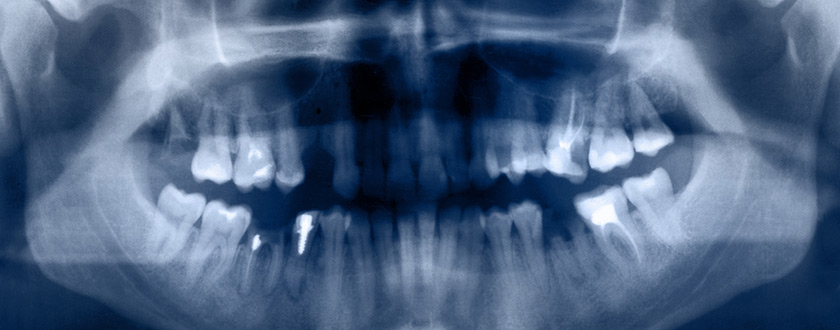How Safe are Dental X-Rays?
Dental X-rays a great way for dental professionals to examine the health of the tooth, its root, and the surrounding bone to catch problems as early as possible. As hygienists place the protective aprons over a patient, however, some patients wonder just how safe the X-ray process is.
Over the years, consumers have seen conflicting reports about the safety of X-rays. Complicating matters is the fact that dental offices seem to differ on their X-ray schedule. Some offices X-ray healthy patients every six months, while others X-ray once a year or only when there is a reason for concern. This inconsistency makes some patients wonder if there’s a reason to be concerned about the medical radiation a patient receives during an X-ray.
Small Doses of Radiation
According to the Society for Pediatric Radiology, a normal set of four bitewing X-rays exposes a patient to .005 millisieverts of radiation. This small amount of radiation is slightly less than the amount of radiation a person is generally exposed to in a day’s time, from sunlight, building materials, air, and water. This amount of radiation is significantly less than the radiation a person is exposed to in a head or chest CT Scan.
Experts point out, however, that radiation exposure accumulates over a person’s lifetime. This makes it especially concerning for parents of young children, who worry that too many X-rays could be harmful to young, developing bodies. A person who follows the recommendation for two dental cleanings per year will be more effected by twice yearly X-rays than someone who visits a dentist who X-rays once a year or every couple of years.
Minimize Exposure
How much is too much? Major dental associations are currently sponsoring a campaign that urges dental professionals to minimize the use of X-rays in dental diagnosis in children. Through the campaign’s website, dental professionals can download information on how they can make the most of each X-ray to minimize radiation exposure in patients.
The campaign urges dentists to “child-size” the exposure time and amount in children and to only order X-rays when necessary, rather than to meet a set schedule. In adults, dental professionals have already been trained to minimize exposure and use a protective collar, but it’s especially important for patients who have a chance they might be pregnant to let the hygienist know before an X-ray has begun.
The Benefits of X-Rays
The small radiation exposure is often greatly offset by the health benefits an X-ray brings to patients. An X-ray is the only way a dentist can see beneath the gum to the root and bones beneath. This can pinpoint health problems that can lead to loss of the tooth or worse. Dental problems can lead to bacterial infections, a compromised immune system, and, according to some research, cardiovascular disease.
Dental X-rays produce an infinitesimal amount of radiation, ranking it among the safest types of medical X-ray used today. Parents of young children can request that their children be X-rayed on a less frequent basis if they are concerned but for adults, the medical benefits of an X-ray greatly outweigh any danger they might pose.





